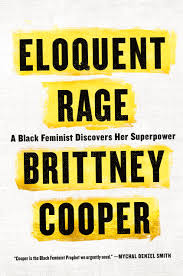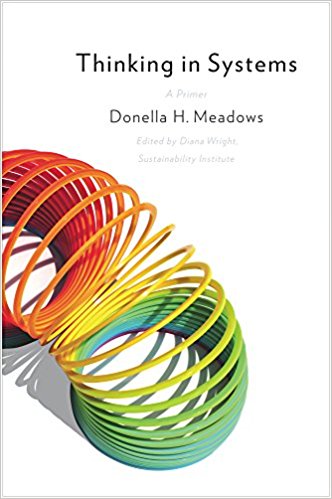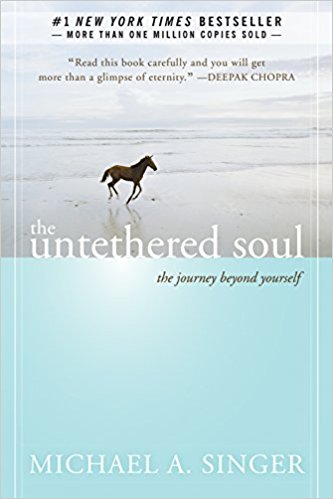Draw circles
“The eye is the first circle; the horizon which it forms is the second; and throughout nature this primary figure is repeated without end. It is the highest emblem in the cipher of the world.” – Ralph Waldo Emerson, Essays –"Circles”
 Let’s imagine that all learning takes place in a dense, primordial forest, like the one you drive through on the way from Forest Grove, Oregon, to Manzanita on the coast. Get off the highway and into the woods and every once in a blue moon, there is a clearing just big enough for a brilliant blue sky or glowing moon to shine through onto a miniscule circular spot on the forest floor, its translucence revealing flowers working hard to bloom between dark green trees. That tiny shot of light is learning, a double espresso of insight, light, then dark again.
Let’s imagine that all learning takes place in a dense, primordial forest, like the one you drive through on the way from Forest Grove, Oregon, to Manzanita on the coast. Get off the highway and into the woods and every once in a blue moon, there is a clearing just big enough for a brilliant blue sky or glowing moon to shine through onto a miniscule circular spot on the forest floor, its translucence revealing flowers working hard to bloom between dark green trees. That tiny shot of light is learning, a double espresso of insight, light, then dark again.
Physicist Hermann von Helmholtz once likened knowledge to an alpine climb—when you climb a mountain, you don’t go straight from the bottom to the top, you zigzag, you go around and through, eventually getting to the top where you can then see both the top and bottom and the straight line between them. Perhaps he was talking about desire lines in a way. When you’re at the top, you can show others what Helmholtz called the "royal road." But being shown the royal road isn’t learning, it’s only the explanation, just as being taught to read a map isn’t the same as reading one.
 As I look at my life’s learning—those trails in the forests, the bush-whacking and foraging, the rattlesnakes thrown here and there to keep me on my toes, the poison ivy that comes in the form of humans sometimes, those fantastic waterfalls that appear when you’re hot and dusty—in the midst of all that, there are people who stand out as guides, nightlights in the dark, people whose worldview illuminates the forest in some deep, grounding way, people like Charles Hampden-Turner, one of the most widely brilliant, passionate, compassionate, complex, and witty people I’ve known.
As I look at my life’s learning—those trails in the forests, the bush-whacking and foraging, the rattlesnakes thrown here and there to keep me on my toes, the poison ivy that comes in the form of humans sometimes, those fantastic waterfalls that appear when you’re hot and dusty—in the midst of all that, there are people who stand out as guides, nightlights in the dark, people whose worldview illuminates the forest in some deep, grounding way, people like Charles Hampden-Turner, one of the most widely brilliant, passionate, compassionate, complex, and witty people I’ve known.
 Among many other ideas, Charles intrigued me with the cybernetic concept of vicious and virtuous circles, something he’s written of often, something that drives his thinking. This excerpt from an interview explains his focus:
Among many other ideas, Charles intrigued me with the cybernetic concept of vicious and virtuous circles, something he’s written of often, something that drives his thinking. This excerpt from an interview explains his focus:
"I bought Jim Watson’s house from him in 1968. The image of the double helix has always haunted me and intrigued me.
I think in terms of virtual circles and vicious circles. I’m hugely influenced by Gregory Bateson who kept saying you have to look for the pattern. You shouldn’t become obsessed by the elements within the pattern, but the elements that made the pattern…You’ve got negative and positive feedback loops, and as you join the feedback loops together you’ve got a helix, an error correcting system.
Nearly all the relationships between contrasting values are capable of forming a virtuous circle. You are loyal, and because you are loyal you have dissent when you believe you must. Because of your loyalty your dissent is taken seriously, so it’s loyal dissent. The loyalty helps dissent and dissent helps loyalty.
These pairs of values that I deal with always depend upon the contrasting value—in fact values are not significant at all. I worked that out very, very early. Values are binary digits like a traffic signal. I mean there are no red lights really without a green light. Take away either light and the thing no longer has any meaning. Moreover, if it’s stuck on red it’s not only useless it’s downright lethal. It is the constant movement along the values continua that really preserves health and development.”
In Charles’ world, it is the reconciliation of dilemmas—this movement between the two horns of the dilemma—that creates wealth, creates intrigue for him, and creates meaning itself.
 A vicious circle is an acknowledgment and a voicing of the cycles we fall into—they are unending and impossible to leave unless you first acknowledge the circle and then consciously work to break it. Vicious circles are a series of reactions that compound an initial unfortunate occurrence or situation: They feed themselves, like a snake feeding on its tail. They reinforce themselves, reinvesting our energy in the negative.
A vicious circle is an acknowledgment and a voicing of the cycles we fall into—they are unending and impossible to leave unless you first acknowledge the circle and then consciously work to break it. Vicious circles are a series of reactions that compound an initial unfortunate occurrence or situation: They feed themselves, like a snake feeding on its tail. They reinforce themselves, reinvesting our energy in the negative. Here is the text of the vicious circle of exclusion that I use in my work (read the text of each circle to the end, then go back to the first line and read again—each forms an unending circle):
Vicious circle of exclusion
Diversity (which) forces me to recognize that mine is not the only way
and when divergent views meet,
I feel fearful and believe someone loses
which puts me
in an untenable position
so I increasingly
avoid encounters with difference
because….
This vicious circle explains the avoidance, the separateness, the segregation between people that occurs in the world, the reduction of Self and Other.
The opposite—virtuous circle—is an aspiration of what could be or must be. It is a voicing of what we want for our lives, an expansiveness of Self and Other:
Virtuous circle of inclusion
Inclusion (which) allows me to know other ways of being in the world
and when divergent views meet
creative collaboration and innovation result
which enables me and the organization to learn and grow
so I increasingly seek out and embrace difference
by creating environments of…
I believe Charles’ focus on the reconciliation of dilemmas emerged from his private life, as all of our important work does, creating a complex and externalized algebra of figuring things out for ourselves, though ostensibly for others.
To be meaningful, perhaps we have to go back to the personal. What are the circles of my personal life? By making your own vicious and virtuous circles—about creativity, money, love, parenting, weight, procrastination—whatever topic you want to investigate, you might discover something that will take you off the vicious circle and onto the virtuous one.
Here are some circles that have emerged for me about money and art and work:
Vicious
(Believing that) money is dirty and selfish
Leads me to the conclusion that to make money, I also have to be dirty and selfish
So I sabotage every possibility of living in abundance
By saying yes to projects and jobs that I hate and dread
And then procrastinating because there is no joy in them for me
Which drags down my energy and soul and being and reinforces my belief that…
(I believe that) money provides an opportunity and freedom
For me to do good things in the world, for myself and others
So I look for opportunities to do work that will expand my mind, heart, soul
And say yes to work that I feel adds value to the world
Knowing that what I give to the universe will come back to me
In ways I cannot yet imagine and will reinforce my belief that…
Offering myself to the world with a price tag attached
Feels transactional, not transformational
And rather than experience life that way
I rebel and don’t offer myself to the world at all
Which results in anxiety about money and a fear that what I do
Is only measurable by…
Offering myself to the world freely
Is transformational and feeds my soul
And makes me feel fully alive
So I put my work and writing and self into the universe
Believing that at some time, what I am giving will come back to me
And sustain me and so I continue…
By focusing only on what we believe will sell to audiences we already know
We lose sight of our passion, reduce our visions, and underestimate the world at large
All of which doesn’t make us more focused on that tiny market we know,
But paralyzes us into an inaction in which our ideas get smothered by
The anxiety we feel about money, which causes us to…
Virtuous
Paying attention to what our hearts lead us to do
Always enlarges and deepens our focus, our creativity, and our impact in the world,
Increases the offering we can make to the world,
and detaches our vision from money,
Expanding our own Selves in the process, which
Makes even more meaningful contributions to the world possible by…
(Thank you, Charles).

Map your dilemmas. Sometimes negative cycles mystify us; naming the cycle is the only way to demystify it.






